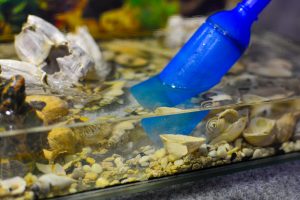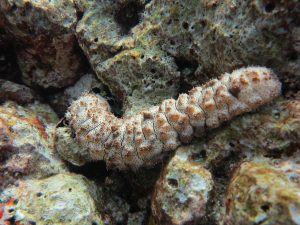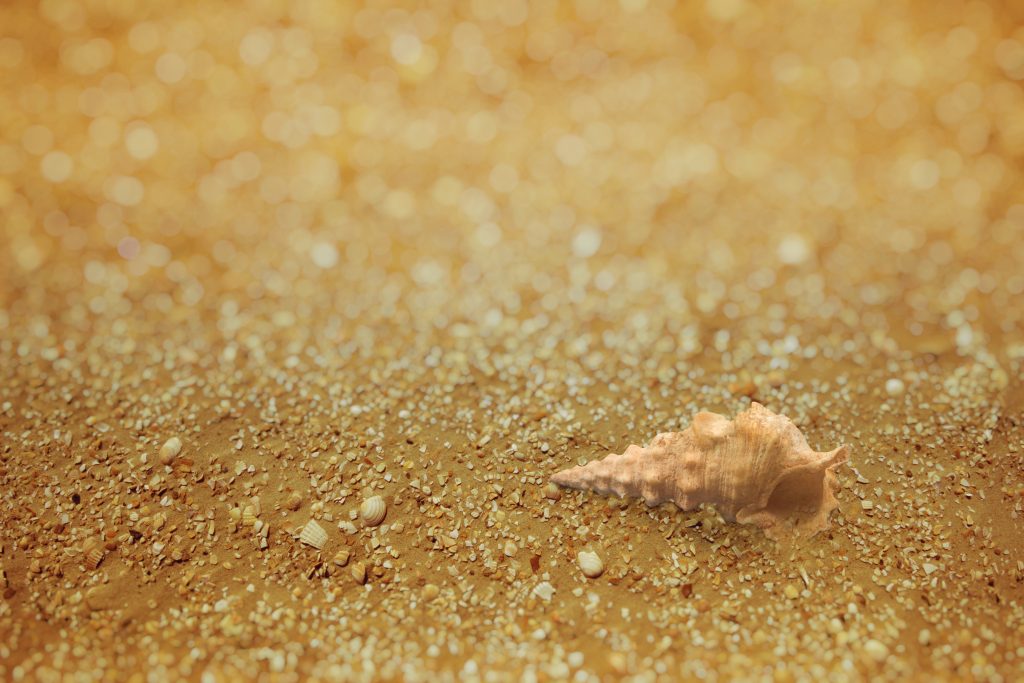 One of the biggest challenges of keeping a successful reef aquarium, especially over the long term, is maintaining the purity of the main tank’s inner sanctum. We go through great lengths—expense, too—in order to achieve this. Think gravel vacuuming detritus, wringing filthy sponges over your kitchen sink, and so on… Is it necessary?
One of the biggest challenges of keeping a successful reef aquarium, especially over the long term, is maintaining the purity of the main tank’s inner sanctum. We go through great lengths—expense, too—in order to achieve this. Think gravel vacuuming detritus, wringing filthy sponges over your kitchen sink, and so on… Is it necessary?
The answer to that common question depends mainly upon the type of tank you’ve set up, and maybe what kind of “exhibit” you’ve envisioned. Still have a reverence for those old-fashioned, squeaky clean systems with, say, blue gravel and miniature sunken pirate ships? Then, most definitely yes. On the other hand, if you maintain more naturalistic systems, it depends. For example, we’re seeing reports from freshwater aquarists that say yes, detritus (sometimes called mulm) is not just tolerable, but beneficial (particularly in planted tanks). It even gives certain freshwater biotope aquaria a more realistic appearance. Concerning marine aquaria, however, detritus is not only unsightly but potentially harmful. In fact, detritus is really bad in reef aquaria.
Perhaps unsurprisingly, most reef aquarists aim to create a naturalistic representation of tropical coral reef habitats. One thing that anyone who has visited a real reef will immediately notice is how “dirty” many reef tanks look. Heck, even those folks who have never been to a reef, but seen freshly harvested live rock, will notice a clear difference. So, where does aquarium detritus come from and why is it so undesirable?
The muck from “nowhere”
A dictionary definition of detritus might read like, “Any sort of waste.” It is in this sense that we oftentimes refer (very disparagingly) to nefarious types of people as “human detritus.” For a select few, it is the name of an underground British death metal band. It is only in the ecological sense that we use the word to describe solid, partially decomposed organic matter; this detritus is made up primarily of animal feces, shed exoskeletons of small crustaceans and the remains of dead organisms. In some cases, it simply is the rotting mass of some chunk of organic matter that has for long been lying on the bottom; in others, it is material that precipitates or flocculates in the water column and settles to the bottom (e.g. marine snow).
Sometimes, it appears so fast that we can hardly imagine where it came from. And we fret… But a little aquarium detritus isn’t so bad. And it’s probably unavoidable (try convincing your fish to stop crapping). We don’t need to be obsessively compulsive about the whole thing. Not only will mulmiphobia completely ruin our enjoyment of the hobby, but it could also even rob important aquarium organisms of a critical food source (we’ll get to that in a bit). Truly, the big problems arise when this waste material is allowed to accumulate.
That nasty grey-brown sludge buildup is (at least in reef aquaria) something that we don’t want to see. Mulmy rock surfaces irritate small, desirable live rock fauna and can limit coralline algae growth. It’s gross and doesn’t look “right.” And as the buildup grows, it just becomes more of an eyesore.
What we don’t see, no matter how big the accumulation gets, is the community of minuscule life forms that feed on it. These are the varied bacteria and fungi that finish it off, mineralizing it (that is, breaking it down) into basic, soluble components that can be again taken up by primary producers such as plants. The rate at which detritus accumulates is determined not just by how it is produced, but also by how fast it is consumed by these microorganisms.
Quintessential bottom-feeders
 Ever hear of the detritus cycle? Too likely not, as a sponge- and vacuum hose-wielding aquarists of old understood it poorly at best. We aquarists of the present and future are only starting to grow aware of natural processes that ecologists have long been aware of. In short, the detritus cycle is a route in the food chain through which detritus is fully mineralized by the action of heterotrophic microbes (bacteria, archaea and fungi) as well as detritivorous animals and protists.
Ever hear of the detritus cycle? Too likely not, as a sponge- and vacuum hose-wielding aquarists of old understood it poorly at best. We aquarists of the present and future are only starting to grow aware of natural processes that ecologists have long been aware of. In short, the detritus cycle is a route in the food chain through which detritus is fully mineralized by the action of heterotrophic microbes (bacteria, archaea and fungi) as well as detritivorous animals and protists.
What’s most significant (though not immediately clear) regarding the microbial part of the process is that it is tightly connected to the nitrogen and phosphorus cycles. Being as detritus is mainly composed of carbon-rich compounds such as complex carbohydrates, why would this be so? Because decomposers take up substances such as nitrate and phosphate from the surrounding waters while utilizing detrital material to build new biomass! This is why biological means of detritus removal are so important to a “naturally balanced” system.
So, what about the detritivores? Yes, they’re important too! These critters (from nematodes to harpacticoid copepods to deposit-feeding sea cucumbers) play a major role in detritus management. However, the term “detritivore” might be a bit misleading. While these animals do indeed ingest detrital material (which isn’t particularly nutritious), they do so mainly to consume the associated microbes (which are quite wholesome—yum!)! By physically breaking detritus down further, and then concentrating it in excreted pellets, detritivores greatly accelerate the detritus cycle.
Pure and tidy
While fungi play a huge part in degrading detritus in freshwater environments, this role is mostly taken on by heterotrophic bacteria (both aerobic and anaerobic) in marine environments. Thankfully, with our growing understanding of food webs and nutrient cycling (and an appreciation for naturalistic systems), microbial products are increasingly being developed for aquarium use. These microbes are far better than the more harmful types that might colonize detrital accumulations, which can strip the aquarium water of oxygen and even move on to attack corals and other delicate sessile invertebrates. Also, by promoting these “good” microorganisms, the aquarium keeper makes detritus more attractive to detritivores!
With the right community of organisms (beneficial bacteria, copepods, etc.), this organic waste can be naturally rediverted right back up the food chain!






tony_garcia18 says
Very informational!
tony_garcia18 says
Love it!
Derek Ruble says
??
MeMo says
Never knew poop could be so good! :0)